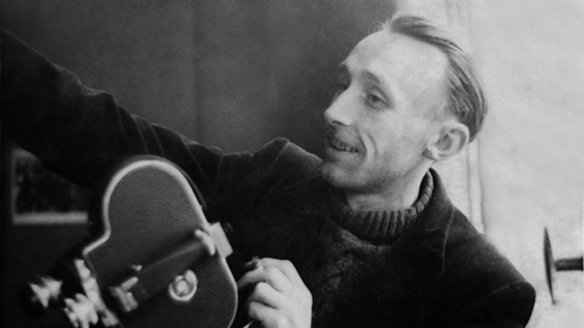Young French filmmakers were uninspired by the films in the late 60’s, so, naturally, they decided to break the mold of the dull and unrelatable films they had been stomaching and started a world changing cinematic revolution. Great minds coming out of this era came up with profound theories such as Auteur theory, as well as Andre Bazin’s “Cahiers du Cinema”. The concepts provided by these examples are still universally thought about today, even by movie goers who don’t know what they are. Auteur theory has almost become the norm, with directors adding their own signature, cameos, or other telltale signs of their handiwork (like Tim Burton, Stan Lee, or Michael Bay). In contest to the Auteur theory, interestingly enough, is “Schreiber Theory”, which puts the director behind the screenwriter as the true author of the film.
While the articles published in Cahiers du Cinema are responsible for the concept of seeing films as artwork instead of strictly economic product. Bazin founded his magazine in 1951, and began publishing game-changing articles like “Les Politiques de Auteur”, “The Ontology of the Photographic Language”, and “The Evolution of Film Language” while recruiting world class directors like Jean Luc Godard and François Truffaut. The Cahiers du Cinema also makes sure to release their Annual Top 10 List, only missing a handful of years since their conception.

Andre Bazin
French New Wave was also a lot like Italian Neo-Realism and “New Hollywood” in a way because their movies were still reliant on having genres with safe markets. Everything that happened in 60’s Hollywood did it’s part to shake the system, and 70’s Hollywood was about to feel the effects during “The American New Wave”. This new identity for Hollywood was the perfect chance for them to modify their films into complex, original, and non-conformist masterpieces. The generation responsible for cultural and economic growth was disillusioned by the futile war they witnessed, and displeased with the ruling elites call for compliance.
Although many films that were being produced in this era were also being funded by major studios, the directors of the time reflected a new type of subject matter and a fresh kind of stylistic taste. Many of these directors drew tons of influence from Europe and the progression of foreign films. Another solid move from these directors was re-imagining and re-making some of Hollywood’s most classic genres, like the subjects of war, crime, and cowboys.
Names from this era of directors reads like a who’s-who of all the people who have now somehow left their mark on the industry forever, such as Coppola, Scorsese, Romero, Lucas, Spielburg, Allen, Kubrick, Polanski, Friedkin, Carpenter, Craven, and Bogdonavich, to name a few. There is a reason why these are known as some of the best directors, however, and I believe it is exactly because of the timely explosion of artistic and creative expression. New Hollywood was known for taking risks and letting filmmakers live out their ambitions to the best of their abilities. Unfortunately, by the 1980’s, studio’s had recognized and reeled in the recklessness of gigantic flops from directors that went a little overboard.

Wow, this first line of your blog is fantastic. It made me want to read more. Your descriptive words are on point. The way you described the French filmmakers and their concepts was great. I liked the way you correlated the directors adding their own signature such as Tim Burton and Stan Lee. I never gave it much thought that the classic genres were re-imagined.
LikeLike